
One of the things I like most is doing home inspections on old houses. When buying an old house, there are typical problems and several unique ones too. The houses have a lot of architectural character, but there’s also a good chance you’ll see something you’ve never seen before.
When buying an older home, it’s essential to have a thorough home inspection. Buying an old house has many advantages and can be an excellent investment with the correct information. A complete home inspection can give you a wealth of knowledge about potential problems to help you make an informed buying decision.
Hiring an experienced home inspector can help you avoid common problems plaguing older homes and better prepare you for old house ownership. Below are some common issues you’ll likely see while out house hunting. Recognizing potential home inspection deal breakers ahead of time can save you time and money. Home inspections of older homes usually uncover some of the following issues:
- Hazardous Building Materials – such as lead paint and asbestos
- Foundation and Structural Problems – such as foundation, termite, and water damage
- Electrical Problems – old electrical systems and subpar work
- Roofing Problems – old, patched roofs with evidence of prior roof leaks
- Mechanical Equipment Problems – old heating and cooling systems and water heaters
- Plumbing Problems – old supply and waste piping and plumbing fixtures.
- Mold / Mildew Problems – mold and mildew from water intrusion problems
- Old Windows and Doors – old, inefficient windows and doors
- Subpar Contractor Work – unlicensed amateur workmanship for repairs
- Energy Efficiency Problems – lack insulation and other energy efficiencies measures
- Other Unique Oddities – unique items like laundry chutes, steep staircases, etc.
In 2002, I began my home inspection journey as an independent contractor, where I inspected large homes to help insurance companies calculate replacement costs for the client’s insurance policies.
While some homes were modern constructed, most homes inspected were 100 years old or older. I took many trips to historic cities like Miami, Charleston, and Washington, DC, to inspect houses built in the 1800s to early 1900s.
What is an Old House?
Homes are generally classified as old if built pre-1978, but historic pre-1920 is a good baseline. Pre-1978 is when many hazardous materials like lead paint, asbestos, etc., were phased out of use in the United States.
Many new homes are constructed from pre-fabricated materials and “cookie-cutter” floor plans, which lack originality and craftsmanship. Older homes were built on-site by hand with more durable materials and attention to every detail. Building materials were often harvested from the building site or purchased from local sawmills.
Nearly every new construction home is now constructed from softer pine materials pre-engineered in factories into floor and roof trusses. Materials are delivered to the construction site on a flatbed truck. Houses built this way can be framed in a matter of days.
Most of the knowledge that created the craftsmanship of old is starting to fade with time. Only a few contractors (and even fewer sub-contractors) possess the desire to build this way anymore.
In years past, builders were on-site working their craft daily. However, builders today are more like managers and rarely, if ever, do any physical work. They manage a group of sub-contractors spread out over various projects.
Constructing a custom home with similar craftsmanship today would take a very specialized builder. It’s not hard to see how the cost to build a house of that quality today could easily be 4 or 5 times higher than the pre-fabricated new building construction used today. That’s assuming you can even find the building materials to build it.
Common Problems Plaguing Old Houses

Ambitious home buyers looking to purchase an old house to restore or one already restored want to preserve a piece of history. Finding a home inspector with the experience and training needed to inspect old houses is critical.
However, during the pre-offer phase, when just looking around, having a DIY home inspection checklist can help you narrow your search and minimize problems.
Let’s look closer at some of the common home inspection findings in old houses:
Insider’s Tip: When looking for a home inspector to inspect an old house, I recommend choosing a Certified Master Inspector (CMI). Certified Master Inspectors are thoroughly vetted, have been in business for at least 3 years, have performed over 1000 paid inspections, and adhere to the highest industry standards. Find a Certified Master Inspector
Hazardous Building Materials Found in Old Houses
Old houses will likely contain either asbestos, lead paint, or both unless the property has been previously remediated.
Lead-based Paint Problems
Lead is a neurotoxic metal harmful to people, particularly young children. Lead paint was used in interior and exterior paint before 1978. Lead was also used in plumbing pipes until the mid-1980s. Ingestion of lead through the mouth or nose could lead to heavy metal poisoning.
The EPA banned the use of lead in paint because of the potential for children to chew on furniture and toys containing lead. Adults are vulnerable to lead through the risk of sanding wall surfaces with lead paint and breathing in the dust particles.
The EPA has strict guidelines that contractors must follow when working with lead materials. Ask your contractor if the EPA is lead-based paint certified when doing any renovation work in an old house.
Insider’s Tip: Lead paint can be sealed and painted over, provided the surface is smooth. All underlying flaking or chipped paint must be removed to create a flat surface to receive new paint. The prep process is where most homeowners who elect to do it themselves trip up and don’t do a thorough job. Look closely for bumps and bubbles in painted wood and plaster surfaces.
Asbestos in Building Materials
Asbestos is a fibrous material that causes lung cancer and other respiratory problems. Asbestos was commonly used in many building materials, such as:
- Cement Fiberboard Siding
- Vermiculite and Batt Insulation
- Roof Felt and Shingles
- Window Putty
- Vinyl Tile Floor Coverings
- Sprayed Ceiling Texture and Textured Paint
- Insulation around Ducts and Heating Sources
- Fuse Boxes, Wiring Insulation, and Outlets
- Fireplace Logs
While the EPA has banned most asbestos-based products, a full ban has been unsuccessful. While the EPA banned building products from being used in the mid-1970s, no action could be taken to require homeowners to remove existing asbestos-based products. However, during renovations on old homes, an EPA-certified contractor must remediate known asbestos.
Many building contractors will bypass and leave materials such as pipes, wiring, and insulation in place if they are concealed in wall cavities during renovations dealing with lead and asbestos-based products. Therefore, many old houses today still contain some lead and asbestos.
Insider’s Tip: The biggest concern with asbestos is making sure the material isn’t airborne. Sometimes removal may not be an option. Covering the material is the best option unless you plan on hiring a licensed contractor to remove it.
Foundation and Structural Problems
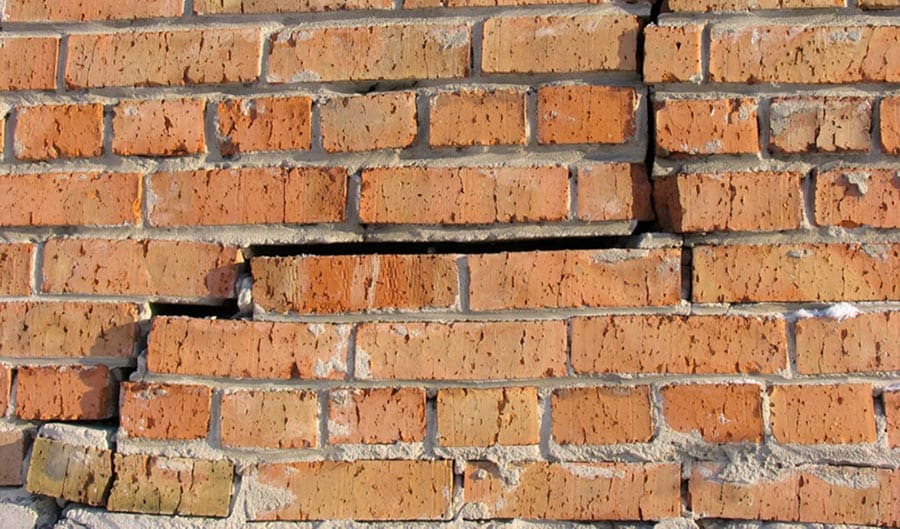
Age catches up with even the best-built houses. As the house ages, settlement and deterioration can take a toll on the home. Settlement occurs naturally and happens to every house. Unevenness in the floors and cracks in the exterior and interior walls result from excessive foundation settlement, masonry piers deterioration, or wood structure damage.
This is almost always caused by excessive moisture caused by improper drainage around the house and groundwater issues. Signs of foundation and structure damage include:
- Unevenness in floors
- Exterior and interior wall cracks
- Sagging roof structure
- Doors and windows that don’t operate properly
Foundation issues and structural problems can be repaired if caught early. However, one of the things typically noted in a home inspection is repair work that wasn’t done using good building practices.
You’ll often find that a homeowner (may not be the current homeowner) had a repair made, and a licensed contractor didn’t complete that. This is usually obvious due to the quality of the workmanship, like improperly constructed piers, lack of foundation footers, wood-soil contact, etc.
Termite and Other Wood Destroying Insect Damage
Termites and other wood-destroying insects like carpenter ants or borer beetle activity are common in old houses. In certain parts of the world, this activity isn’t a question of if but when. Termites feed on wood inside crawl spaces, walls, and ceilings. Termites can quietly destroy a house if you’re not careful.
Signs of termite activity include mud tubes on piers and foundation walls, buckling floors, bouncy floors, water damage, and peeling paint. Look for excrement along the windows, baseboards, and other wood trim resembling sawdust. This is a sign that the house may have an active termite problem.
Prevention is your best course of action. Have a pest control inspector check the house annually. Pest control companies often provide services that will pre-treat your home on a maintenance schedule and provide a bond against termite activity.
You can also keep wood and other debris off the ground in the crawl space and around the house, store firewood away from the foundation, keep vegetation trimmed back, and remove dead stumps, as these can attract termites who set up colonies.
Electrical System Problems
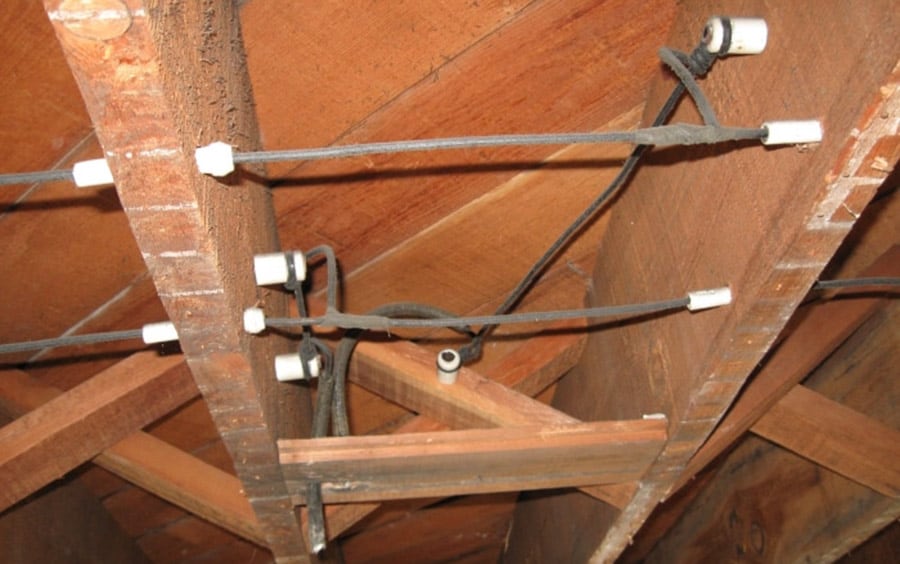
Electrical issues generally scare home buyers more so than any other issue. The majority of electrical repairs center around safety concerns. Electrical wiring has a limited lifespan of approximately 70 years. Home inspectors and contractors often use the term “grandfathered into code” when discussing wiring.
For more information on the lifespan of electrical wiring, see our article, How Long Does Electrical Wiring Last in a Home? for more in-depth details.
You are not required to update the electrical wiring unless you open the wall. However, if the electrical wiring is between 60 and 70 years old or older, being proactive about electrical updates should be a top priority due to the high risk of electrical fire and shock hazards.
If the house has a fuse panel present, you should plan for an electrical panel upgrade. Breaker panels also have limitations. Breaker panels have a lifespan of 60-70 years. However, many breaker panels are severely undersized and should be upgraded.
Common electrical problems include:
- Undersized Electrical Service – Many older homes were built with 60 amp service. While this is rare today, it can still be found in rural parts.
- Obsolete breaker panels – Undersized breaker panels should be updated. Other panels, such as Federal Pacific Stab-Lok Breaker Panels, are an inherent fire hazard and should be replaced.
- Obsolete electrical wiring – Knob-and-tube and electrical wiring over 60 years old must be replaced.
- Ungrounded electrical outlets – 2-prong ungrounded outlets must be updated for several reasons. Ungrounded outlets will be connected with old wiring over 60 years old. Ungrounded outlets provide no grounding protection for modern electronic devices.
- Subpar Electrical Work – include improper electrical updates where modern grounded electrical wiring is improperly connected with old ungrounded electrical wiring. This can be particularly dangerous and deceptive for homebuyers who see a new 200amp panel and new electrical wiring, only to discover that the electrical wiring was not done correctly.
Roofing Problems
Home inspections on older homes reveal roofing problems like deteriorated roof coverings. Depending on the house’s age, some roofs, like slate and metal, may still be original to the year built. I recently inspected a home built in 1910 that had an original metal roof sealed numerous times.
Many roofs on older homes have leaked multiple times over their lifespan. Many of the roofs may be expensive to repair. Beware of roofs with excessive patching and multiple layers of shingles can indicate a persistent problem that was not corrected.
Roofs with rusted metal, broken shingles, mismatched shingles, multiple layers of shingles, and damaged roof sheathing should be replaced. Roof replacement cost will depend on the roof covering materials and roof sheathing that requires replacement.
Other cost factors include the height of the roof from the ground and your local market. Many 2 and 3 stories older houses have steep roof pitches that require specialized equipment to do the replacement. Not every roofing contractor can replace a roof on an old house. If a roofing contractor has to come from out of town, this will increase costs.
Mechanical Equipment Problems
Many older homes routinely have old heating and cooling systems and water heaters.
Heating and cooling systems have an average lifespan of 20-25 years. Many heating and cooling systems last less than 10-15 years in coastal climates. Annual maintenance is important to get the most out of a heating and cooling system.
Some older heating and cooling systems may still be functional; however, you can expect high maintenance costs and the risk of sudden breakdown. The problem with older systems is parts may be challenging to come by.
Old HVAC ductwork can cause a system to overwork and wear out faster. Old ductwork is generally prone to air leaks, which lead to higher energy costs and potential problems from condensation, mold, and mildew around leaking joints in the ductwork.
Water heaters have a typical lifespan of 10-15 years. I’ve seen countless water heaters in older houses that were over 30 years of age. Water heaters over 15 years of age should be replaced even if they are functional due to energy efficiency advancements.
Old equipment will likely prove to be expensive to use and maintain. As systems near the end of their lifespan, they become prone to failure and could quit without warning or cause a fire.
Older water heaters also lack the safety features of modern water heaters, such as pressure relief valves. Aging water heaters without pressure relief valves have been known to fail and become ticking time bombs that have exploded, causing massive damage to the structure.
Plumbing Problems
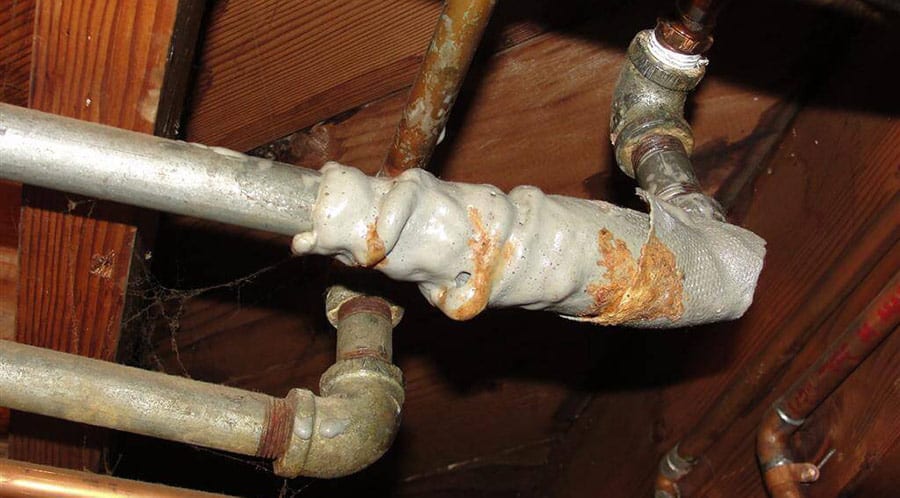
Plumbing issues with pipes in older homes can be dangerous and costly to repair. As we mentioned earlier, many older homes had lead supply pipes, which could harm consuming water output. Other piping, such as galvanized piping, corrodes on the inside, reducing water flow and pressure. This can cause pipes to rupture or leaks to develop around fittings.
Galvanized Piping
Galvanized water piping was commonly used in older homes. We still see galvanized water piping in use today. Galvanized piping deteriorates from the inside out, causing the piping’s interior diameter to decrease over time. This will reduce water pressure on the plumbing fixtures.
As the galvanized piping corrodes, rust and other contaminants get absorbed into the water, causing rust on tubs, sinks, toilets, and other fixtures. This can also shorten the lifespan of your water heater. Lastly, contaminated water from galvanized piping can cause heavy metal poisoning when consumed over a long period.
Polybutylene Piping
Other dangerous piping includes polybutylene (PB) piping. Polybutylene piping is grayish piping used from the 1970s to the 1990s. Polybutylene piping corrodes over time in contact with chlorine found in municipal water supply and many household cleaners.
Polybutylene is a defective product that has been a part of a class-action lawsuit with the manufacturer. Polybutylene piping has been known to fail without warning. For more information on polybutylene piping failures, see Inspectpedia.com
Cast Iron Piping
Waste piping, such as old steel and cast iron piping, is also prone to failure due to age. While cast iron is a good quality material for drainage, it is difficult to work with and expensive to repair.
Cast iron pipes are often only replaced when a failure occurs. Most plumbers will simply remove the old pieces of cast iron pipe and replace them with PVC piping.
ABS Waste Piping
ABS black waste piping is also a defective product prone to leakage in old houses. ABS piping has also been a part of a class-action lawsuit about the risk of sudden failure. For more information on ABS piping failure, see Inspectapedia.com
Mold / Mildew Problems
Mold and mildew are common problems in older houses. Millions of mold spores are found all around us. These spores are generally not a big concern in a dry environment. However, moisture from a plumbing or roof leak and high indoor humidity can cause mold to spread like wildfire.
We will discuss later that older homes are very drafty and poorly insulated. This makes the home’s interior humidity levels challenging to regulate. Plumbing leaks inside walls can spark a mold outbreak that is difficult to remedy.
Mold-infested homes will make breathing difficult and cause skin and eye irritations. Severe cases can lead to death related to respiratory problems. This is why it’s crucial to be proactive in replacing old building components before becoming a problem.
Old Windows and Doors
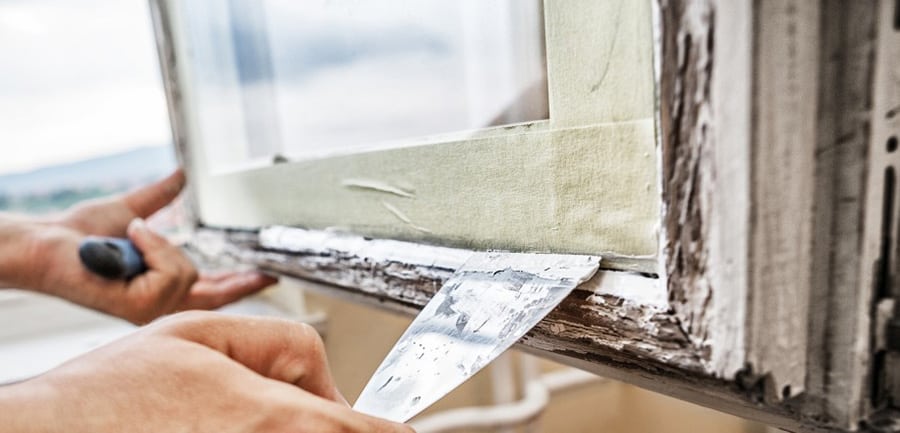
Part of the charm that attracts buyers to older homes is the windows. Old windows tend to be oversized, allowing a lot of light into rooms. However, the windows are not single-paned and not energy efficient.
The downside is that many old windows are no longer operating due to broken sash cords, allowing a lot of air loss, and often condensate on the interior side, causing mold and mildew to form on the window sills, walls, and window treatments.
Many people think they need replacement windows to increase their home’s value and improve efficiency. This simply is not true. While installing replacement windows would improve energy efficiency, most buyers of old houses don’t want to do that because they’ll lose part of the house’s architectural charm.
You can improve old windows, such as replacing the tracks and gaskets on the wood sashes to prevent airflow around the windows. A skilled carpenter must remove the sashes and make custom cuts with a router to allow the windows to accept the tracks and gaskets.
You can also replace the single-pane glass with safety glass, which has a higher insulating value. Install wood storm windows on the outside over the original windows, which will add to the insulating value making them comparable or better in some cases than replacement windows.
Subpar Contractor Work
Often during a home inspection of an old house, we find at least some subpar contractor work. We see with older houses that have had several previous owners that repair work tends to be subpar. Owners without fully vested in a home won’t spend the money needed to do the job right.
And if the home has had renters, you can almost guarantee the work is not up to par. We’ve seen many old houses with painted-over water damage, improperly repaired plaster cracks, incorrectly repaired foundation support piers, improper plumbing under sinks, and even painted bathtubs, to name a few.
Old Houses are not Energy Efficient
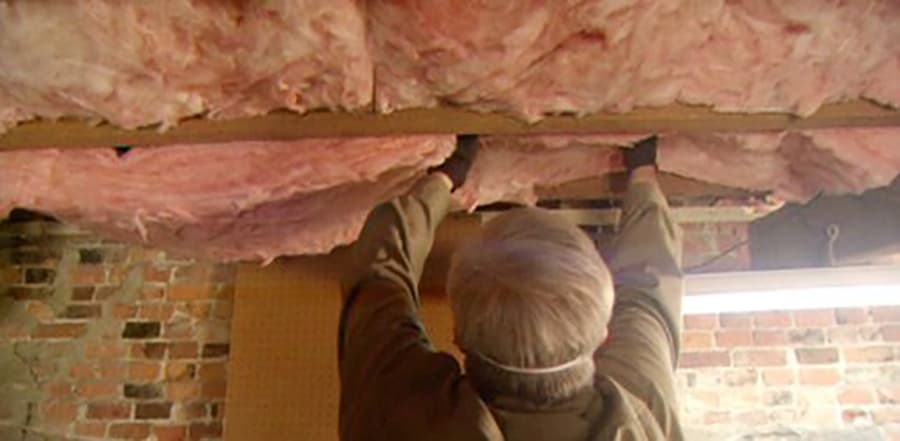
Houses 60 years of age or older are not typically well insulated. Unless the house has had extensive renovations that included improving the insulation and the walls, floors, and ceiling and updating windows and doors, you should expect it will be expensive to heat and cool. Many old houses have no insulation at all in the exterior walls.
The most significant contributing factor is the lack of insulation, particularly in the exterior walls and ceilings. It’s a massive undertaking to insulate the outer walls of an older house. Adding wall insulation will vary depending on the house’s age, style, and size.
Adding attic insulation improvements will be somewhat easier, provided enough height clearances are inside the attic. Many older houses have attics you can stand in, while some have height restrictions of 4 feet or less.
Crawl space insulation isn’t as important and could cause more harm than good. Insulation in crawl spaces can help if the crawl space has the adequate ground clearance and a plastic vapor barrier over the ground. It’s essential to keep a crawl space dry.
Insider’s Tip: When purchasing an old house that is occupied, ask the owner to provide a copy of the last 12 months of utility bills. This can provide an estimate of what you can expect to pay each month if your family is of comparable size.
Other Oddities Found in Old Houses
Old homes are full of oddities that newer houses just don’t have. Many of these are unsafe and would not pass today’s building standards. These include laundry chutes, servant staircases, staircases leading to nowhere, root cellars, low ceiling heights (common in second-floor spaces that were once attics), and nonfunctional chimneys.
You won’t have to correct these issues to purchase and move in. However, if you plan to renovate an older house, you must remember that subpar work or other oddities like this may require correction to pass building code inspection.
Other Costs and Benefits to Consider About Old Houses
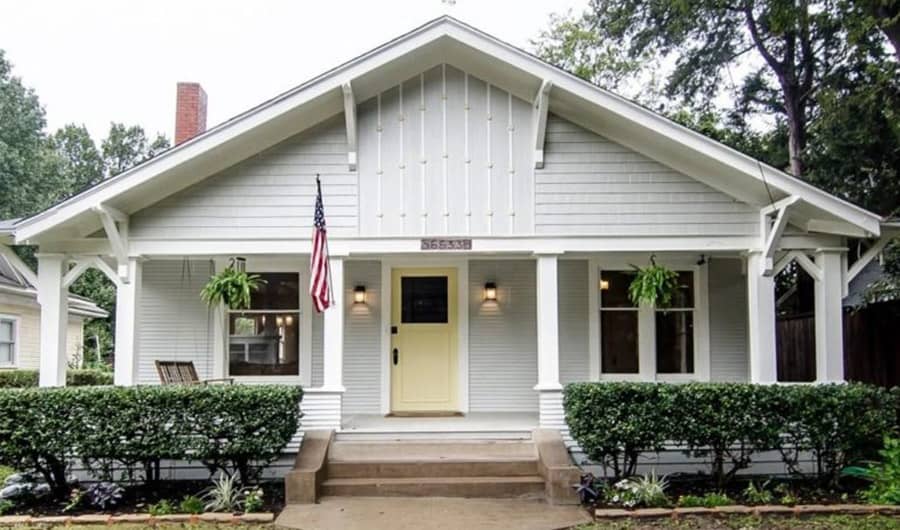
It takes a particular type of person to own an older house. They take a lot of care and maintenance. I often tell people considering purchasing one that they are actual labor of love. Usually, it seems the projects are never-ending. But there are some great benefits to owning an older home.
High Homeowner Insurance Costs
Homeowners insurance is used to replace the structure in case of a cataphoric loss. Homeowners insurance is usually more expensive on older homes due to condition and replacement costs.
Replacement cost is usually calculated based on the price to rebuild a property in the same condition, regardless of depreciation. This is hard to do as houses get older, as much workmanship and detail simply can’t be duplicated.
Some insurers will use market value, which replaces only up to the house’s market value in its present state. This amount will not likely cover the total cost of rebuilding older homes.
Like the condition and age of the systems, other factors play a significant role in insurance costs. Insurance is all about risk calculation.
Insurers often request a home inspection for insurance on homes 40 years old or older. Four-point inspections tell insurers when the roof, electrical, plumbing, and mechanicals were updated last. This information helps insurance carriers to calculate the risk they will suffer a loss on the policy.
In some cases, if the roof or other systems are beyond their functional age, insurance companies will either demand upgrades, decide not to extend coverage, or rate the premium in a risky price tier.
Unique Character Features
The original features of old houses are appealing to many buyers. Charming period-specific features that can not be duplicated in modern construction help drive demand. Older homes have built-in features like custom cabinetry and grand staircases that wow buyers.
Potential for Superior Construction Quality
Older houses may be constructed with better building materials than modern homes. The “bones” are often much higher quality than the pre-fabricated materials used to build newer homes.
One of the biggest factors to consider is how well the structure has been maintained against wood-destroying insects, moisture, and mold. Second is the house’s electrical and plumbing systems updated over time, as these tend to be the most costly updates that tend to be overlooked.
Prime Real Estate Locations
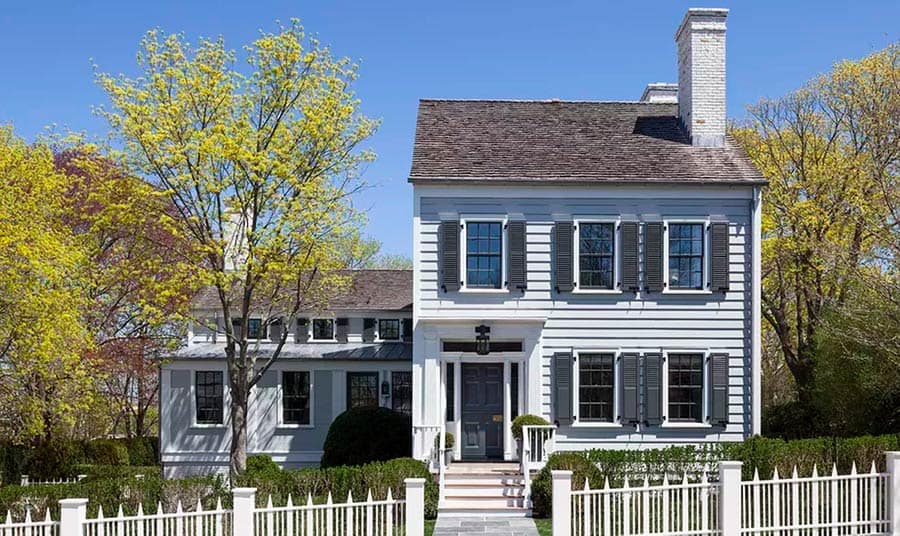
Many older homes are located closest to the center of established cities. As cities expand outwardly into suburbs, the proximity to bustling downtown areas for shopping, dining, and employment opportunities is appealing, particularly to young career-minded adults.
This is another factor that makes these homes pricey due to the steady demand for real estate. But not all locations meet these criteria. Many small towns have many old houses that are in distressed condition.
However, purchasing for renovation with a quick sale may not yield the return you’re looking for. Towns with low median incomes and limited employment opportunities may not justify the investment.
However, in recent years, dilapidated older homes that have been condemned or seized for past due taxes have been taken over by cities and torn down. The land is then sold to developers to build more modern structures such as condos, shopping centers, or commercial office buildings.
The Potential to Build Equity Fast
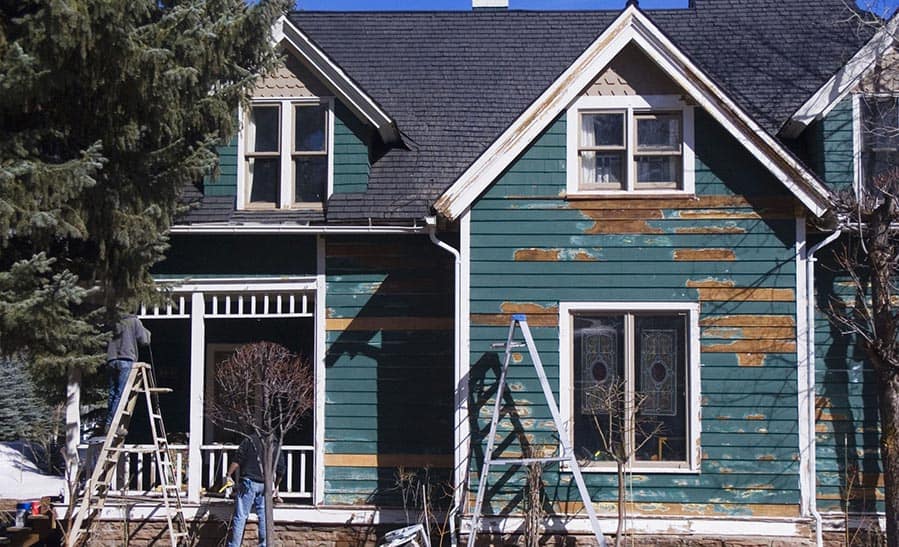
Another attraction of old homes is the opportunity to snatch up prime real estate in a distressed condition and turn it into gold. But beware, older homes can be a money pit if you do not plan correctly. Be sure to do your homework.
Ask your agent what similar homes have sold in pristine condition with modern amenities, and then consult a licensed contractor for a bid on the needed and desired work.
When buying an older house, it would be wise to have a licensed home inspector, a pest control specialist, and a structural engineer examine the house. This may seem excessive, but not when you consider the amount of money you’re spending on the purchase and renovation project; it’s money well spent.
When dealing with older homes, there will always be unknowns. Whatever dollar amount your contractor bid for renovations comes in, you should add 15% for unknowns such as undetected termite damage inside walls, hazardous material removal, etc.
Insider’s Tip: The FHA 203k loan program is a residential renovation loan program that helps homeowners fix their properties. Homebuyers can also purchase houses that need repair. The 203k loan program is a great way to finance the renovation costs of an older home.
Historic Home Renovation Restrictions
If the home you are buying is on the historic registry in the city, you’ll likely have to apply to a local historical society board to do any work that alters the house’s appearance.
Some cities and towns have renovation restrictions on historic homes. Everything from choosing paint colors, roof covering, windows, and exterior doors requires the homeowner to apply to the local historical board before you can do any work.
While this may seem like a headache due to the added layer of red tape, restrictions like this help preserve history and property values for the city.
Final Thoughts
In closing, it’s important to remember that all houses age. Home maintenance and upkeep are just a part of homeownership, and how much of it you do (or don’t do) will go a long way in determining what you get out of the property when it comes time to sell down the road.







